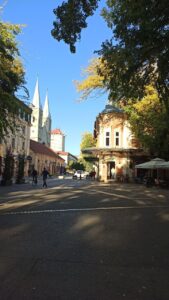Why is housing near nature more expensive?
The allure of living near nature has captivated individuals and families for generations. From serene forests to picturesque lakes, the proximity to natural landscapes often enhances the quality of life. However, this desirability comes with a price tag that can be significantly higher than urban or suburban housing options. Understanding the factors that contribute to the increased cost of housing near nature is essential for potential buyers, investors, and policymakers alike.
Why is housing near nature more expensive?
One of the primary reasons housing near nature commands a premium is the limited availability of land. Natural areas, such as national parks, forests, and waterfronts, are often protected by regulations that restrict development. This scarcity of land leads to increased competition among buyers, driving up prices. As more people seek to escape urban environments for the tranquility and beauty of nature, the demand for these limited properties intensifies, further exacerbating the price increase.
Additionally, properties near natural amenities often come with enhanced lifestyle benefits that many buyers are willing to pay for. Access to outdoor activities such as hiking, fishing, and skiing can significantly improve one’s quality of life. This lifestyle appeal attracts a demographic that values wellness and recreation, making these homes more desirable. As a result, buyers are often prepared to invest more in properties that offer not just a home, but a lifestyle enriched by nature.
Furthermore, the perception of value plays a crucial role in the pricing of homes near natural settings. Many buyers associate living close to nature with a higher standard of living, leading to a willingness to pay a premium. This perception is often reinforced by marketing strategies that highlight the beauty and tranquility of these locations. Real estate agents and developers capitalize on this trend, promoting properties as exclusive retreats that offer a unique living experience, thus justifying higher prices.
Economic Factors Influencing Prices
The economic landscape also significantly impacts the cost of housing near nature. Areas with natural attractions often experience an influx of tourism, which can boost local economies and create jobs. This economic growth can lead to increased demand for housing, as more people move to these areas for work or leisure. Consequently, the rising demand can push property prices higher, making it more challenging for local residents to afford homes.
Moreover, the investment potential of properties near nature cannot be overlooked. Many buyers view these homes as not just residences but also as investment opportunities. The potential for rental income from vacationers or seasonal visitors can make these properties appealing to investors. This investment perspective further drives up demand and, subsequently, prices, as buyers compete for properties that promise financial returns in addition to lifestyle benefits.
Lastly, the cost of construction and development in desirable natural areas can also contribute to higher housing prices. Building in these locations often requires additional investments in infrastructure, such as roads, utilities, and environmental protections. Developers may face challenges related to zoning laws and environmental regulations, which can increase the overall cost of construction. These costs are typically passed on to buyers, resulting in higher home prices in areas close to nature.
Social and Cultural Influences
Social dynamics also play a role in the pricing of housing near nature. As urban areas become increasingly crowded and polluted, many individuals and families are seeking refuge in more serene environments. This shift in population dynamics creates a demand for housing in natural settings, which can lead to gentrification in previously affordable areas. As wealthier individuals move in, property values rise, making it more difficult for long-time residents to remain in their homes.
Cultural trends also influence the desirability of living near nature. The growing emphasis on sustainability and environmental consciousness has led many to prioritize eco-friendly living. Homes that are built with sustainable materials or that incorporate green technologies often command higher prices. Buyers are increasingly willing to invest in properties that align with their values, further driving up costs in areas that offer a connection to nature.
Additionally, the rise of remote work has changed the housing market landscape. With more people able to work from anywhere, many are choosing to relocate to areas that offer a better quality of life, including proximity to nature. This trend has led to increased demand in rural and semi-rural areas, pushing prices higher as more individuals seek out homes that provide both a workspace and a connection to the outdoors.
In conclusion, the higher cost of housing near nature is influenced by a complex interplay of factors, including land scarcity, lifestyle appeal, economic conditions, and social dynamics. As more people recognize the value of living in harmony with nature, the demand for these properties is likely to continue to rise. For potential buyers, understanding these dynamics is crucial in navigating the housing market and making informed decisions. As we move forward, it will be essential for communities and policymakers to balance the desire for natural living with the need for affordable housing solutions.


